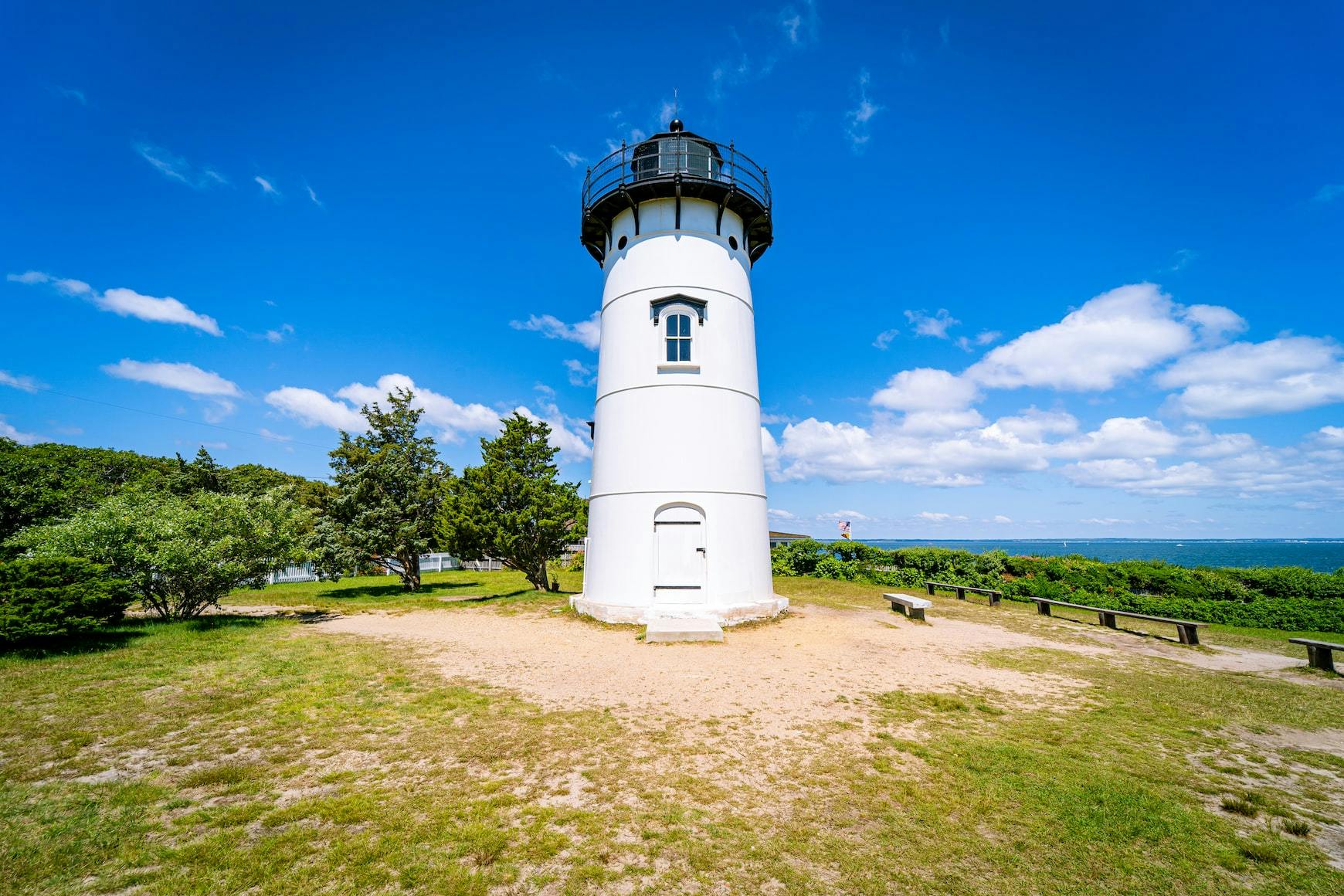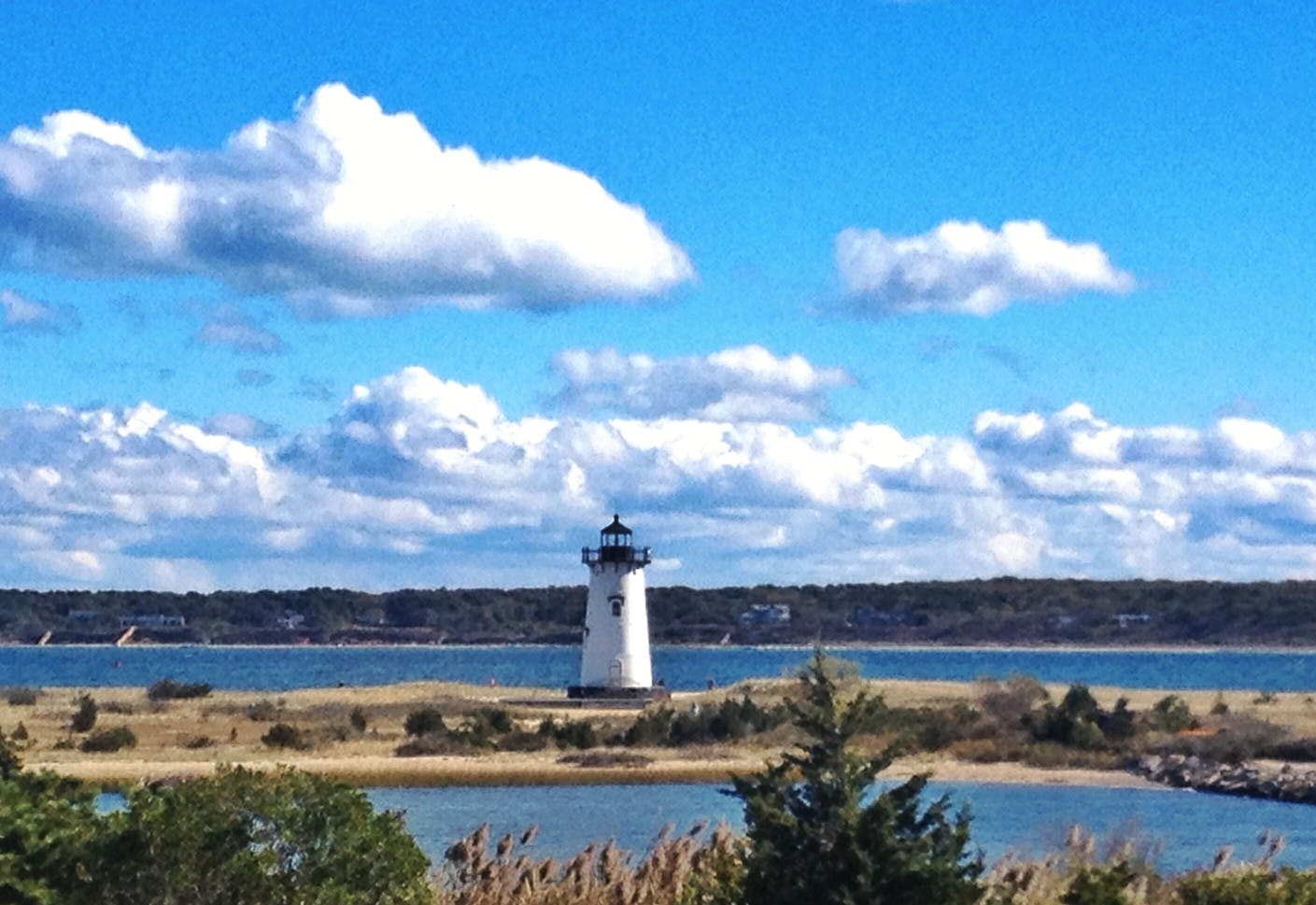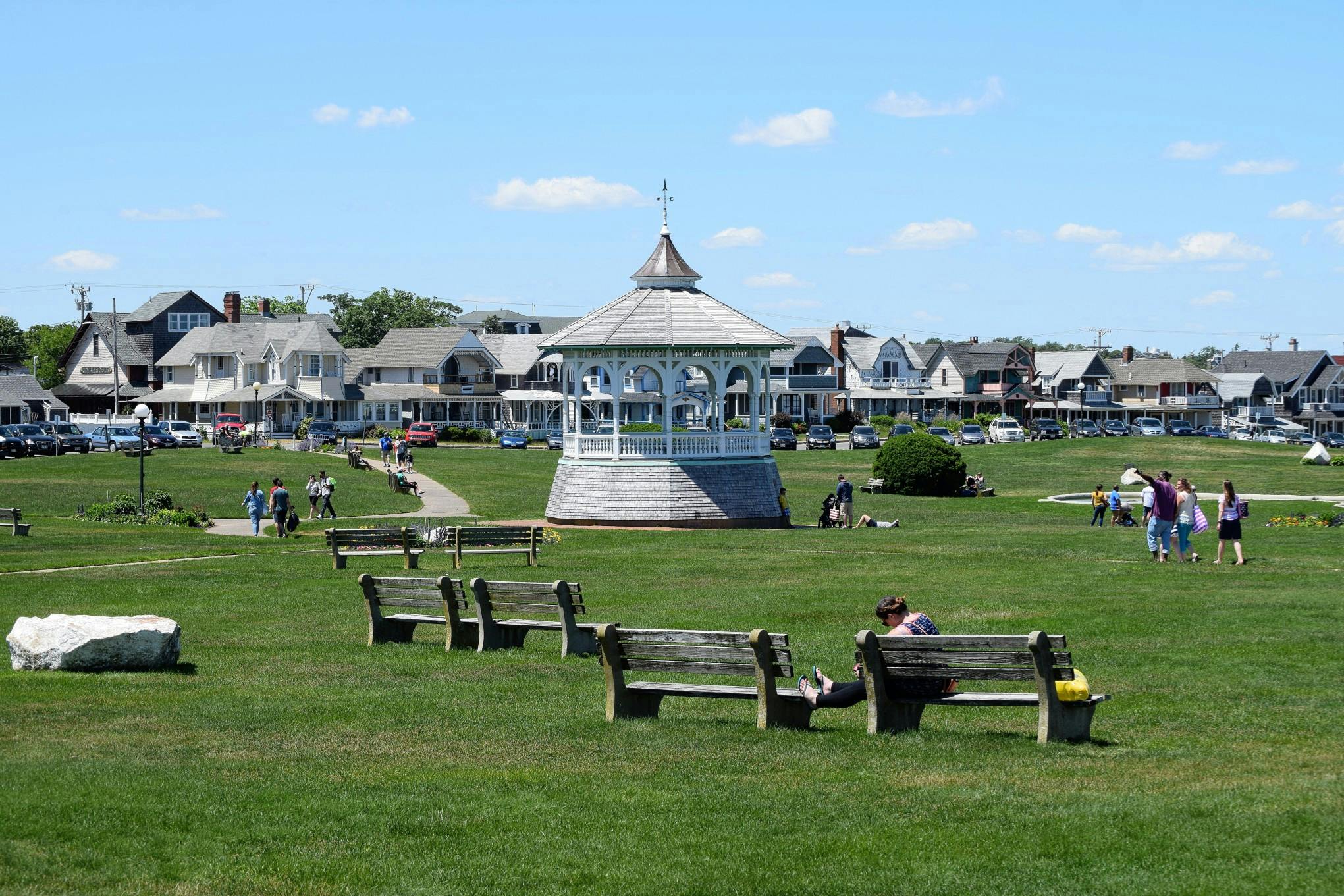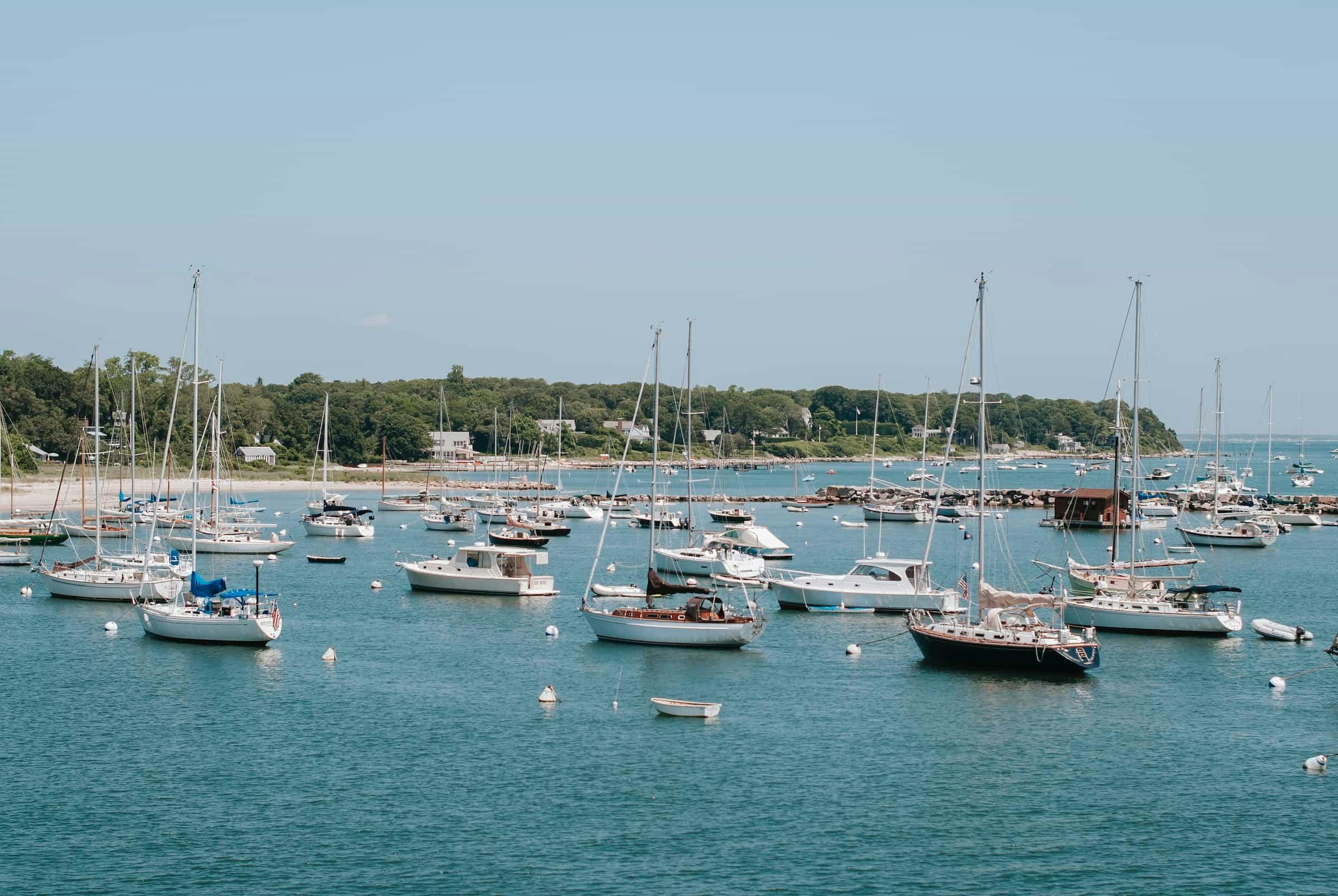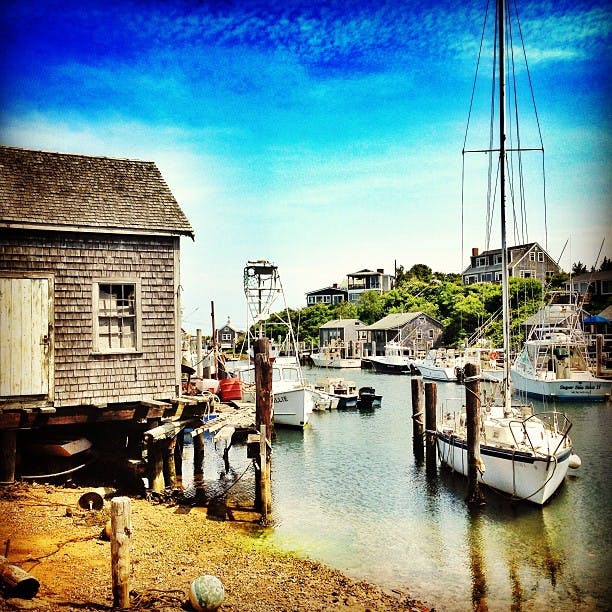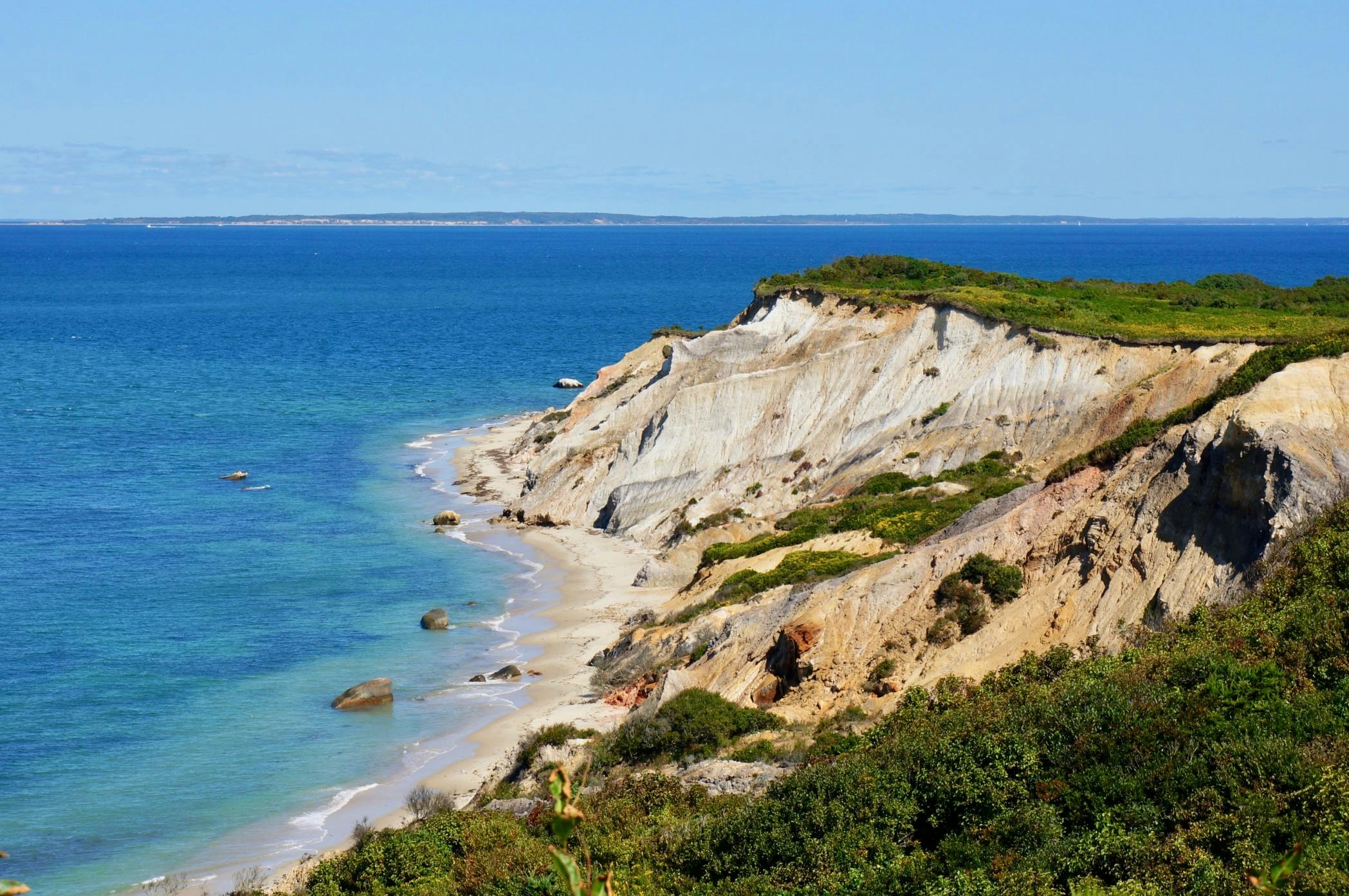Martha's Vineyard is home to five distinct lighthouses and their unique character and histories offer a glimpse into the island's significance as a famed whaling and fishing hub in the 1800s. A visit to any one of our lighthouses reminds visitors of the days long before GPS and electronic navigational systems.
From the early 18th to the mid-19th century the whaling industry was big business on Martha's Vineyard and the surrounding areas off of Cape Cod, Nantucket, and the South Coast. Before the construction of the Cape Cod Canal, the waters of Martha's Vineyard were nautical superhighways for mariners to pass through en route to the large port cities of Boston and New York. Each one of Martha's Vineyard lighthouses were constructed at a time when lamps and lenses served as important beacons for navigational assistance, to help boat captains avoid dangerous coastlines and help ensure safe entry to harbor.
The island's captains and crews were some of the most sought-after mariners in the industry and there was an abundance of whales off the coast of Martha's Vineyard. At a time when whaling and fishing were significant contributors to the island's economy, our five lighthouses provided critical support and safety to some of the busiest waterways in New England.
The Cape Poge Light: Worth the Trip to Get There
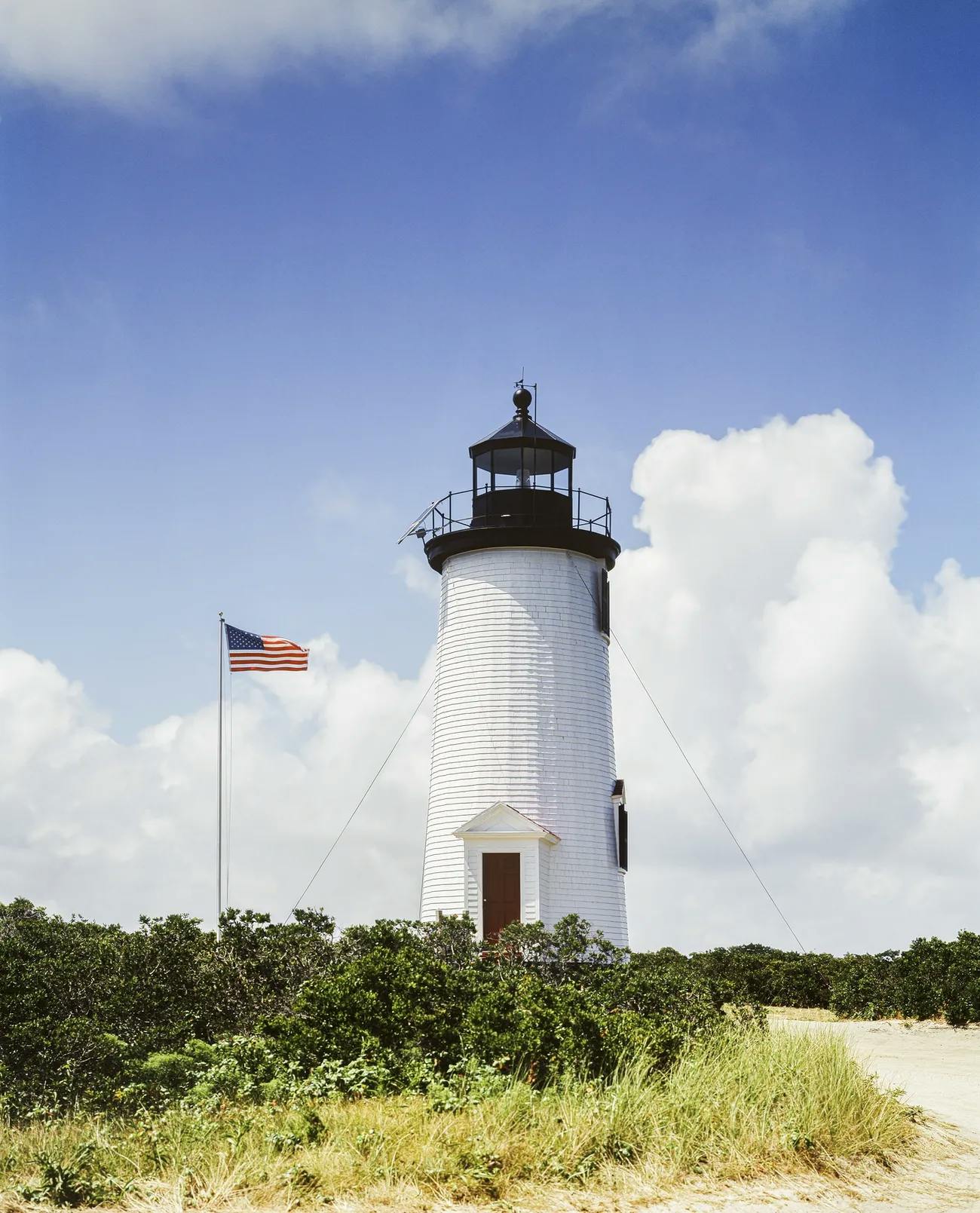
- Name
- Cape Poge Light
- Year Built
- 1801
- Markings
- White with black lantern
- Range
- 9 nautical miles
- Characteristic
- Flashing white for 6 seconds
The Cape Poge Light is one of the oldest lighthouses and also the hardest to reach. The Cape Poge Light is located on the northern tip of Cape Poge, a barrier beach on Chappaquiddick, a small peninsula and occasional island off of Edgartown. The Cape Poge Light sits on land straddled between Cape Poge Bay and Nantucket Sound. Those wanting to visit the Cape Poge Light will likely need to begin their excursion with a ride aboard the Chappaquiddick Ferry.
Cape Poge constitutes the farthest eastern shore of Martha's Vineyard, with Cape Cod to the north and Nantucket to the south and east, making it a particularly vulnerable spot that once saw an impressive amount of maritime traffic.
The Cape Poge Light was first erected in 1801, when it helped guide ships through the nearby shoals and shallows and safely into Edgartown Harbor. Erosion of the coastline and harsh storms caused the structure to be rebuilt three times, once in 1838, again in 1844 and again in 1893. The area is so fragile and susceptible in fact that the Cape Poge Light has been moved seven times because of erosion, the most recent in 1986 when it was moved 500 feet inland, a project that involved the use of a helicopter.
Did you know?
Due to harsh storms and erosion, the Cape Poge Light has been rebuilt three times and moved seven times in its history.
Today the Cape Poge light is a stately white wooden shingled tower with a black lantern and a bright red door on the outside, and an impressive, curving staircase on the inside. The lighthouse is still operational and its Fresnel lens flashes a bright white light some 60 feet above the sand dunes and can be seen as far as nine miles out to sea, and it's now solar powered! The Cape Poge Light is managed by the Trustees of Reservations, while the U.S. Coast Guard maintains the lantern, which has been automated since 1943.
Visiting the Cape Poge Light
One of the best ways to explore and appreciate the Cape Poge Light is by joining the Trustees of Reservations for an over the sand lighthouse tour during the summer months. In fact the only way to access the lighthouse is to drive a 4x4 vehicle with the proper oversand pass, and sometimes even that isn't an option given beach closures due to ongoing weather and wildlife conditions. Brave adventurers can also attempt the walk along the sand from Dike Bridge to the Cape Poge Light, an approximate 3.4 mile walk.
No matter how you get there it's worth the extra logistics to make the trek. Once there imagine yourself as the original lightkeeper, dutifully keeping the whale oil lamp in the tower lit while living in one of the most remote parts of Martha's Vineyard. In fact the first lightkeeper was appointed by President Thomas Jefferson in 1801 and continued to raise eight children in the nearby lightkeeper's house, with practically nothing else around for miles. Several other lightkeepers continued in the post through 1943 when the light became automated.
Edgartown Harbor Light: A Shifting Landscape, A Repurposed Structure
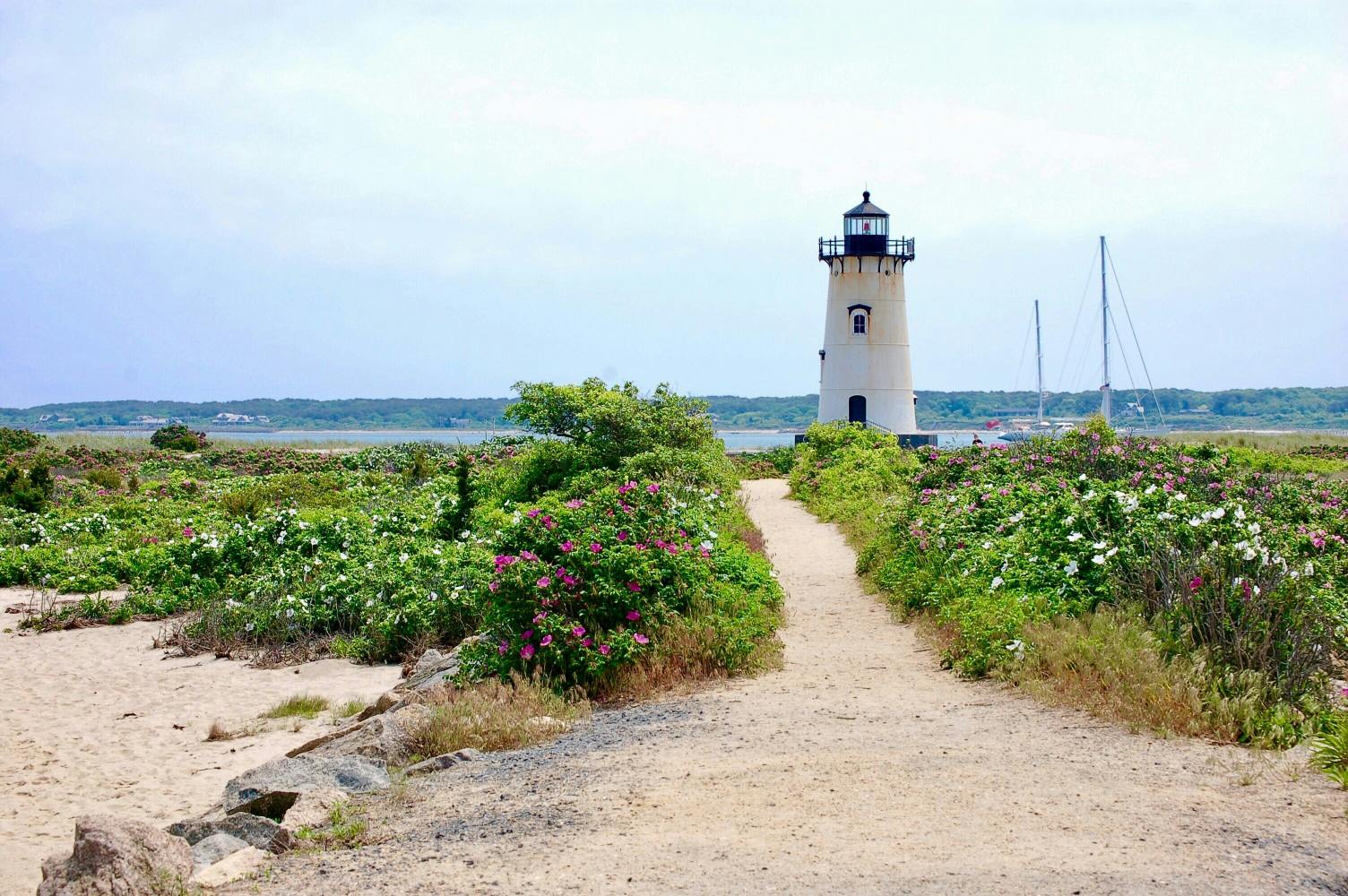
- Name
- Edgartown Harbor Light
- Year Built
- 1828
- Markings
- White with black lantern
- Range
- 5 nautical miles
- Characteristic
- Flashing red for 6 seconds
Located across Edgartown Harbor from the Cape Poge Light you'll find the Edgartown Harbor Light occupying a more protected patch of sand on an inlet off of Edgartown village, and residing on a beach aptly named Lighthouse Beach.
History of the Light
The original Edgartown Harbor Light was built in 1828 and featured a white light shining from a lantern room atop a two-story keeper's house. The structure was built on a man made artificial island a quarter mile out to sea and was originally accessible only by boat. Two years later a wooden causeway was built to connect the lighthouse to the shore. The bridge out to the lighthouse was repaired and rebuilt several times over the years and became a popular place for swimming and leisure.
In 1938 the U.S. Lighthouse Service announced plans to replace the existing light and keeper's house with an automatic light atop a steel skeleton tower and locals were outraged. Islanders and summer visitors alike believed that the tower and bridge held great scenic and historic value and the harbor would not be the same without them. Later that same year an alternative plan was put in place. A lighthouse from Ipswich, Massachusetts, scheduled to be decommissioned, would be moved to Edgartown. The incoming lighthouse was a stately and charming white tower which helped to appease those against the steel tower replacement.
Before the outgoing lighthouse could be removed it suffered one last storm which caused damage to the bridge and the lighthouse's foundation, causing a delay in renovation plans. Shortly thereafter the foundation was repaired in preparation for the new lighthouse's arrival.
In December 1938 the original lighthouse was demolished and in April 1939 the disassembled lighthouse arrived by barge from Ipswich. Over the next month the tower was reassembled and a red lamp installed in its lantern to light the way into Edgartown Harbor. The new shape of the Edgartown Harbor Light stood proud and picturesque.
In the 1950s a stone breakwater, built parallel to and just north of the bridge, began to trap sand, forming what would become Lighthouse Beach. The new stone breakwater built parallel to the bridge had led to a barrier beach beginning to develop around the base of the lighthouse. No longer does the Edgartown Harbor Light stand alone on an isolated island, accessible only by bridge.
Over the years, hurricanes and winter storms have pounded the shores of Martha's Vineyard, causing sands to shift and shorelines to be reshaped. Since the 1950s a barrier beach has gradually grown up around the lighthouse.
Refurbishing the Lighthouse
Over the years, the lighthouse has undergone several rounds of updates and restoration work. In 1988, it was refurbished and received a fresh coat of paint. The historic fourth-order Fresnel lens in its tower was replaced by a solar-powered modern optic lens in 1990. Further updates were made in 2007, when a spiral staircase was added, allowing the lighthouse to be opened to the public for the first time.
Conserving the Lighthouse
The Martha's Vineyard Museum has acted as stewards of the Lighthouse since 1993. According to the Martha's Vineyard Museum, shortly after the Coast Guard declared the lighthouse no longer "mission-critical" in 2012 ownership of the lighthouse transferred to the town of Edgartown, with the Museum continuing to act as stewards.
In 2001 The Museum created the Children's Memorial to memorialize children lost too soon. The Museum hosts annual ceremonies of remembrance in honor of the children included.
Families can have their child's name carved into a granite cobblestone and placed permanently into the foundation of the lighthouse. People from all over the world have embraced the Memorial and aided in its development.
Visiting the Edgartown Harbor Light
In addition to being an iconic landmark the Edgartown Harbor Light is open to the public in the summer months and is available as an event venue, making it a popular wedding location. Popular town events incorporate the structure, including Edgartown's Pink & Green Weekend where the lighthouse is decorated in pink and green and Christmas in Edgartown, which brings the annual lighting of the lighthouse. Edgartown Fourth of July festivities also include a brilliant fireworks display in front of the lighthouse, which brings droves of visitors and residents alike.
The Edgartown Harbor Light is one of the most convenient lighthouses to visit on foot and is an easy walk from downtown Edgartown. You can most easily access the Edgartown Harbor Light from North Water Street across from the historic Harbor View Hotel. Parking is available, but limited, on North Water Street. The Vineyard Transit Authority (VTA) buses drop off on Church Street in Edgartown and it is a 10 minute walk to the lighthouse from this location. The lighthouse is open seasonally for public tours administered by the Martha's Vineyard Museum.
Gay Head Light: A Beacon of Light but also History and Community
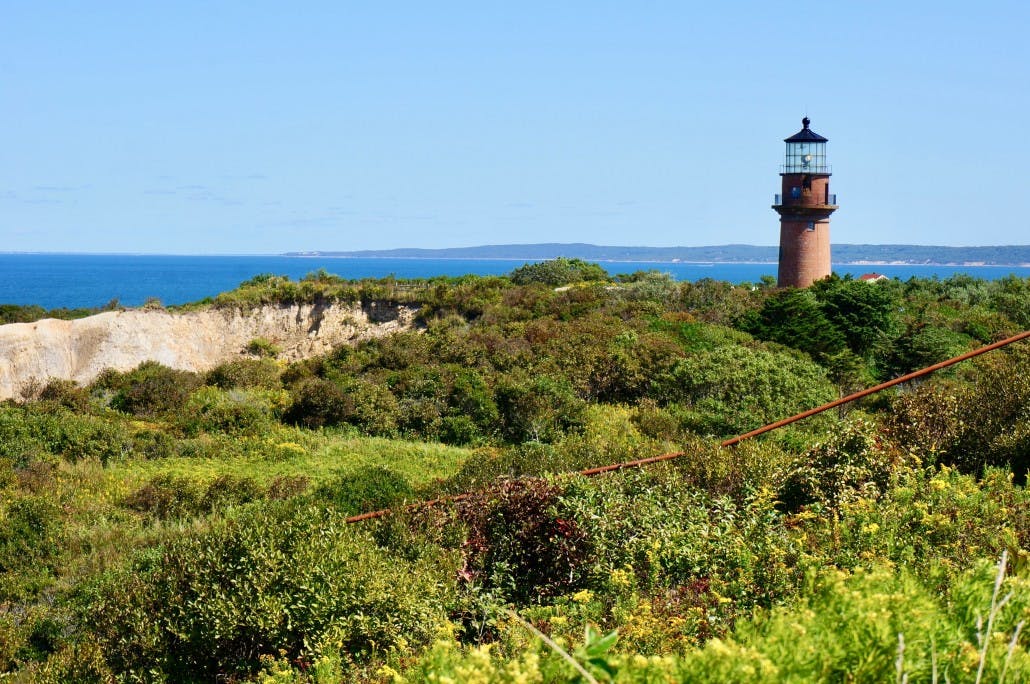
- Name
- Gay Head Light
- Year Built
- 1799
- Markings
- Red brick with black lantern
- Range
- 24 nautical miles (white) / 20 nautical miles (red)
- Characteristic
- Flashing white for 6 seconds
The Gay Head Light is the oldest lighthouse on Martha's Vineyard and its story is a fascinating and precarious one. The lighthouse stands high atop the majestic red clay cliffs of Aquinnah, a National Historic landmark and one of the most scenic views on the East Coast.
Protecting Against Shipwrecks
In the late eighteenth century authorities determined that something needed to be done to assist in navigating a steep underwater ledge with strong tidal currents that was running from the cliffs westward out into Vineyard Sound towards Cuttyhunk. At the same time it was the height of the whaling boom and the waterway was one of the busiest in all the country.
To those familiar with the waters surrounding the Gay Head Light there is a ledge known as Devil's Bridge, and for good reason; it's a precarious rocky shoal that has claimed ships and lives, while also being a consistently reliable fishing spot for many of the same reasons that make it so dangerous. Even once the lighthouse was erected the area continued to see devastating shipwrecks including one of New England's most significant marine tragedies, the sinking of the City of Columbus in 1884.
History of the Light
In 1799 The Commonwealth of Massachusetts deeded two acres to the federal government for the site of the Gay Head Lighthouse. It's said that the construction of the original Gay Head Light took the work of some of our country's founding fathers. According to Martha's Vineyard Magazine “President John Quincy Adams signed the document that officially took two acres of land above the cliffs for the purpose of a lighthouse on July 1, 1799, and the light went into service in November that same year. Alexander Hamilton cut the check that paid for the wooden structure. Paul Revere supplied the metal used in the roof.”
The original Gay Head Light was built on its site in Aquinnah at the extreme western end of Martha's Vineyard as a wooden structure in 1799. In 1844, due to the constant eroding of the cliffs, the tower had to be moved back approximately 75 feet from the edge of the bluff. Drawing increasing importance as a beacon for mariners it was decided that the structure's light needed to be replaced with a lens light.
And not just any lens light but the award-winning Fresnel lens. After having been exhibited at the World's Fair in Paris the 1,008-prism Fresnel lens was installed in the Gay Head Light in 1856. Before the Fresnel lens the lighthouse's best lighting system could be seen for twelve miles, but the new lens allows light to be seen from an impressive twenty-one miles away, illuminating a bright flash every ten seconds.
With the addition of the Fresnel lens the lighthouse needed a structure to better support it and so a red brick tower was erected in place of the original wooden one. The bricks used to construct the new Gay Head Light were said to have been composed of clay harvested from the nearby cliffs or the nearby Chilmark Brick Works. The Fresnel lens was a First Order lens, the largest type built at the time of its installation, measuring seven feet in height and four feet wide.
The new and improved Gay Head Light of the 1800s was a sight to behold and tourists began flocking to the landmark to set eyes on its new lens and the gorgeous coastal cliffs below. The original interest in the lighthouse even spurred the development of nearby shops and restaurants that created additional appeal for visitors. At one time there was said to be a ferry that brought tourists from Oak Bluffs and Vineyard Haven to visit!
Conserving the Light
After spending nearly a century in the Gay Head Light, the Fresnel lens was replaced with an automated electric beacon and transported to the Martha's Vineyard Museum's Edgartown campus in 1952. Today it has been beautifully restored and is on full display at their Vineyard Haven campus and is a must-see attraction.
According to the town of Aquinnah, by 1956 the Gay Head Light was fully automated and the nearby lightkeeper's cottage was torn down. From 1956 to 1985, the automated Gay Head Light was sparingly maintained by the United States Coast Guard. Due to United States Coast Guard Congressional funding shortages through the 1970s and early 1980s, the Gay Head Light along with two other Martha's Vineyard lighthouses (East Chop Light and Edgartown Harbor Light) were listed for destruction. The three threatened lights on Martha's Vineyard were ultimately saved through the objecting federal petition and Congressional testimony.
Thanks to fundraising efforts, proceeds were applied to a major restoration of the Gay Head Light, and plans were made to open the light and grounds to the public. The Gay Head Light was reopened to the public in 1986 for the first time since its closure in 1956. In 1986 lighthouse tours and public lighthouse sunset gatherings once again became available to the community and visiting tourists.
Moving the Historic Aquinnah Lighthouse
While lighthouse admirers continued to visit the Gay Head Light year after year the wrath of Mother Nature continued to wreak havoc on our coastal shorelines and erosion has seriously threatened the Gay Head Light. In 2010 lighthouse keeper Richard Skidmore discovered 40 feet of split rail fence missing, a result of the fence posts falling victim to the erosion of soil and clay.
An investigation was quickly mounted to see whether the lighthouse could be protected in-place or if it had to be moved to safety. It was determined the light could be moved back at a cost between 1-3 million dollars, but it had to happen quickly.
Aggressive fundraising began and by the time of the move 3.4 million dollars had been raised for the project. All six Island Towns had contributed substantial funds, plus grant money and individual donations made it a true community effort. While the campaign to save the lighthouse took a couple years, the move itself was quick. By May 30th, 2015 the 400 ton brick Gay Head Light had been successfully moved 134 feet from where it had originally been built in just three days. On August 11th, 2015, Gay Head Light was re-lit at its new location, where it should stay safe from the impact of coastal erosion for at least the next one hundred years.
Visiting the Gay Head Light
Public tours of the Gay Head Light are available seasonally and are managed by the town of Aquinnah. Public parking is available beside the lighthouse and the Vineyard Transit Authority bus system is also accessible to this historic location.
East Chop Light: The Passion Project of a Local Captain
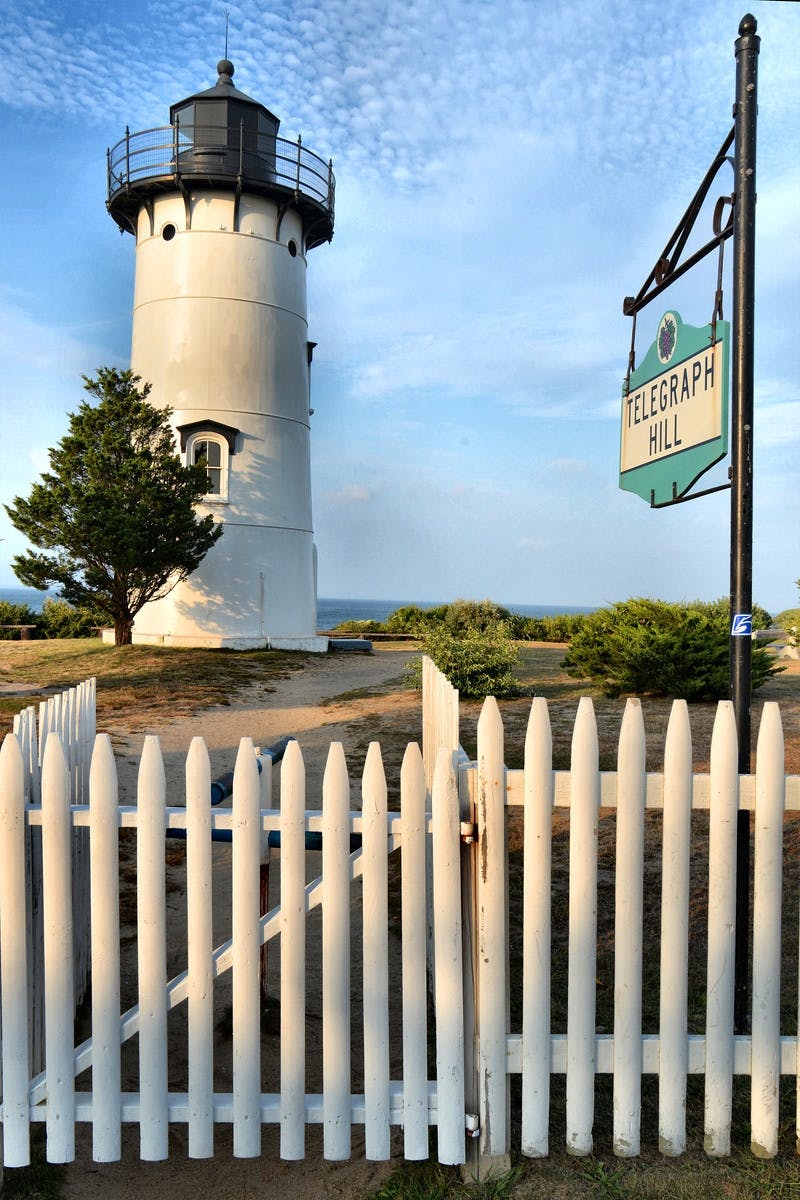
- Name
- East Chop Light
- Year Built
- 1869
- Markings
- White with black lantern
- Range
- 24 nautical miles (white) / 20 nautical miles (red)
- Characteristic
- Isophase green
East Chop Light has a very interesting history. This iconic light sits atop a large bluff in Oak Bluffs on a peninsula known as East Chop. The location was first established as a privately owned signal, purchased and operated by Captain Silas Dagget in approximately 1869. The last of the lighthouses on the island to be erected, Captain Dagget built the lighthouse, and funded the project and its operation by collecting fees from those who benefited from its service.
The original lighthouse burned down just two years after its construction. In 1872 the second lighthouse was built on “Telegraph Hill.” Three years later it was purchased by the United States Congress, and became federally managed. The current day white cast iron conical lighthouse structure was built here in 1875.
In the 1970's-1980's many lighthouses across the country became far too expensive to maintain. Due to technological advancements in maritime navigation, by the 1980s, East Chop Light as well as two other island lighthouses (Edgartown, and Gay Head Lighthouses) were slated for demolition by the U.S. Government.
With a tremendous effort by state and federal legislators ownership of East Chop Light was transferred back to the private sector in 1985. This was the first instance in which an active lighthouse was transferred to a private entity in U.S. history. In 1987 East Chop Light was placed on the National Register of Historic Places.
Visiting the East Chop Light
Today this lighthouse is managed by the Martha's Vineyard Museum and has historically been open on Sundays for visitors. In 2021 the site was closed to the public due to lead contamination in the surrounding park; they are hoping to welcome visitors back to the property soon. There is limited street parking on scenic East Chop Avenue, where you can get a fantastic view of this lighthouse from outside the fence. There are also great views of this lighthouse from the water and it's a wonderful place to visit on a bicycle.
The West Chop Light: The Only Lighthouse Not Open to the Public
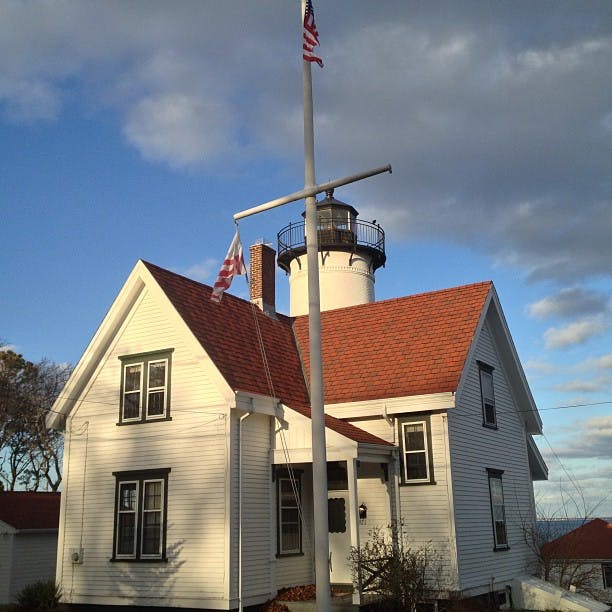
- Name
- Cape Poge Light
- Year Built
- 1801
- Markings
- White with black lantern
- Range
- 9 nautical miles
- Characteristic
- Flashing white for 6 seconds
West Chop Light is prominently visible from the Steamship Authority ferry boats that come and go from Woods Hole. First established in 1817, the current white painted stone tower was built in 1896. Due to erosion, the current tower is over 1000ft south and west of the original 1817 light.
West Chop is one of two large peninsulas that protect Vineyard Haven Harbor. At the time the lighthouse was established, Vineyard Haven was known as “Holmes Hole,” one of the first modern settlements on the Island. The light was established to help guide vessels into the already working port in Holmes Hole.
The lighthouse was automated in the mid 70's, but the original buildings, including the keeper's house, still stand on the property. The well maintained buildings are also painted white with red roofs sitting roughly forty feet atop a large bluff. Today, this lighthouse is not open to the public, however it can be viewed from the road as well as from boats passing West Chop.
